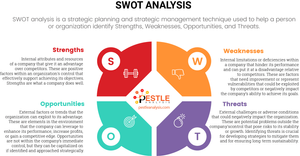The SWOT model, also known as SWOT analysis, is a framework based on strengths, weaknesses, opportunities, and threats.
What is the SWOT Model?
The SWOT model, also known as SWOT analysis, is a framework based on strengths, weaknesses, opportunities, and threats. When people look at a SWOT analysis breakdown on paper, sometimes referred to as a SWOT table or matrix, it looks like a box with four squares. The first box has strengths, and next to that are weaknesses. The bottom left would be opportunities, and the bottom right would be threats.
What you want to do is ensure that you fill in each area based on what a particular company has to offer in each category. This is the way that you can look at whether or not you want to:
- invest in a company
- work with a particular type of company
- or look at the problems that they might have
Sometimes a SWOT model is used in business, and other times it's used if you're looking at a particular deal, or if two companies might potentially look like they could merge together. When you look at an analysis in this manner, it helps you to see whether or not it's a good company, or if it has a lot of areas or noted problems.
SWOT Model Internal and External Factors
The SWOT model is actually very easy to do. As mentioned above, we just need to find out the strengths, weaknesses, opportunities and the threats of the organization. How do we find out those factors? We do so in the following way:
Strengths
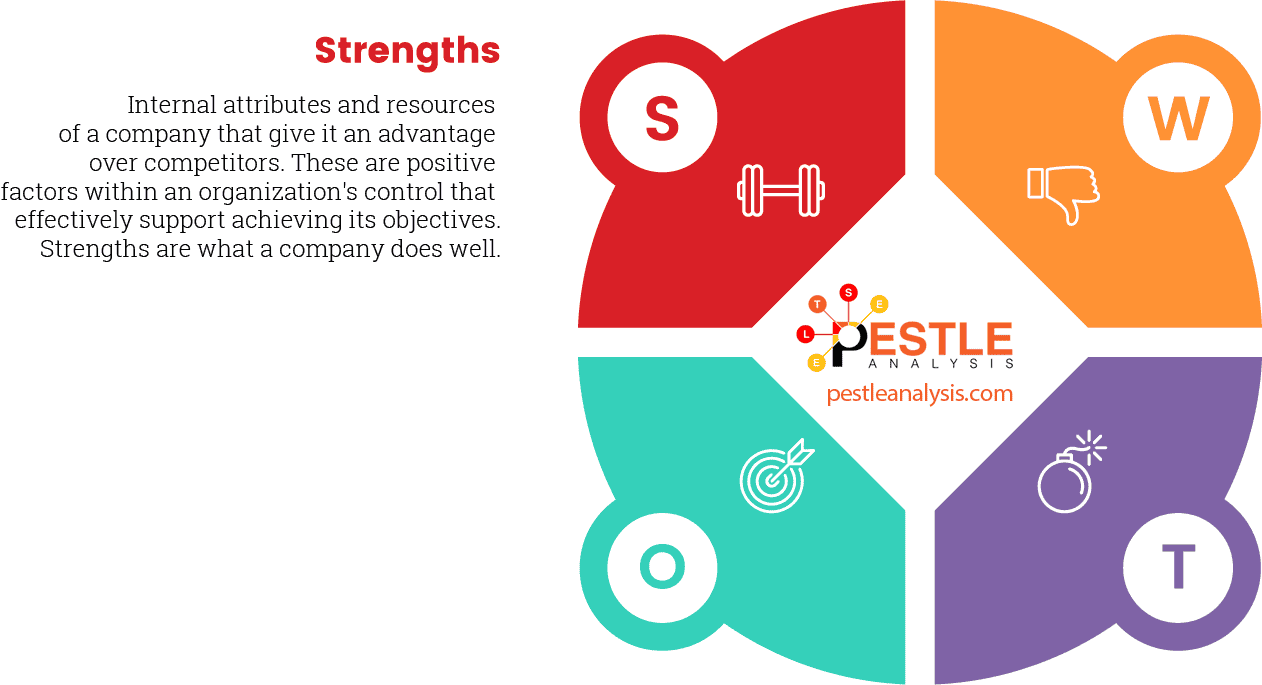
Strengths are an internal factor. These are things that can be controlled by the company itself. These things will help the business to run smoothly. Strengths allow the business to operate at its optimum level.
If a company has a good source of raw materials then we consider them as strengths. Things like skilled labor, heavy investment, good distribution channels, and product branding are all considered as strengths. These things will go under the Strength category in the SWOT model. The company will look to focus on such things and carry out its business plan.
As you focus on the strengths, what you're looking for are:
- areas where the company is strong
- where it's doing well
- and where it's making money
This can also let you know whether or not this is a good investment. You can look at how long they've been in business, the number of employees, if they’ve had consistent growth, and where they plan on taking their company in the future.
Weaknesses
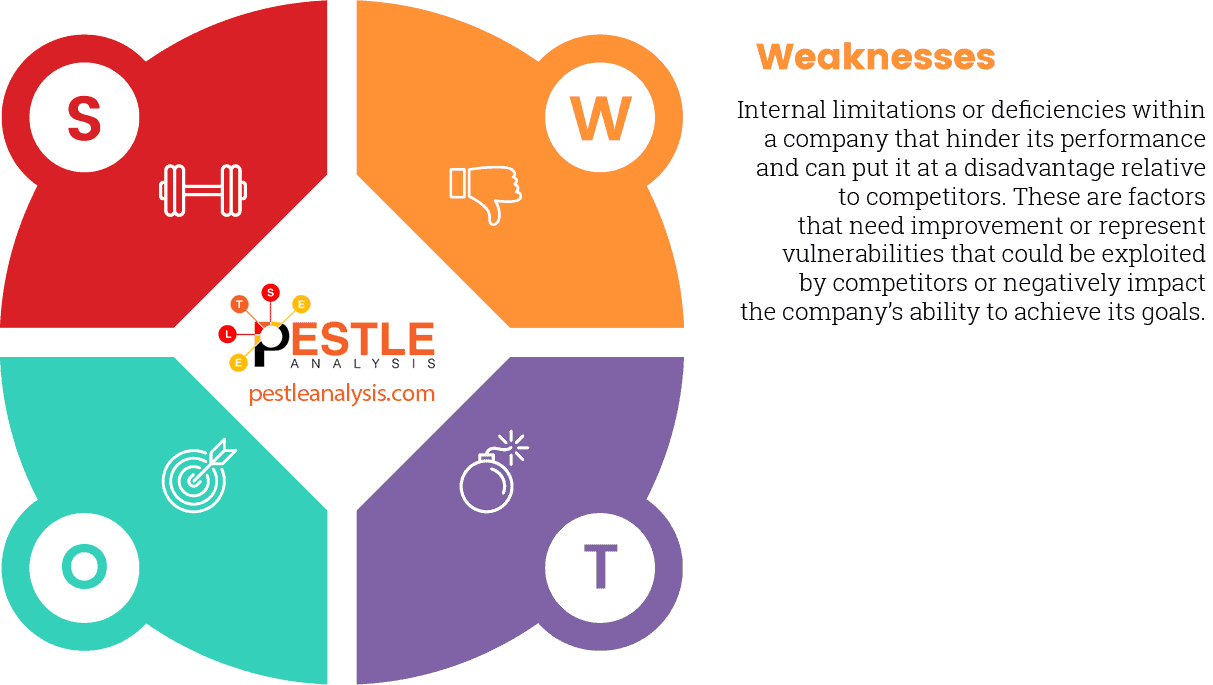
Just like strengths, weaknesses are also internal factors. These are also under a business' control. However the only thing different is that these things don’t help you run smoothly. Rather it’s the opposite.
Weaknesses of a company hinder it from making progress. They provide an obstacle for operating smoothly. Having a poor location where customers cannot reach you easily is a weakness for the firm. At the same time having poor technologies, outdated machinery and no skilled managers can be thought as weaknesses.
These things will be put under the Weakness category in the SWOT model. A fair analysis of these factors will result in a business strategy that tries to avoid these things.
When you look at the weaknesses, you have to think about areas where the company is having problems so you may want to look online to see the bad news and bad press that the company may have received.
When Toyota had their big recall because they were having problems with all of their SUVs, this was very bad news for them because it meant a lot of bad press. Any type of news that’s negative is negative advertising for a company. This can hurt them as it relates to sales. It can also hurt their stock performance because when they do badly, what ends up happening is they lose money and their stock price goes down. Their shareholders, who are the people that have vested (money) interests in the company, end up losing money.
Opportunities
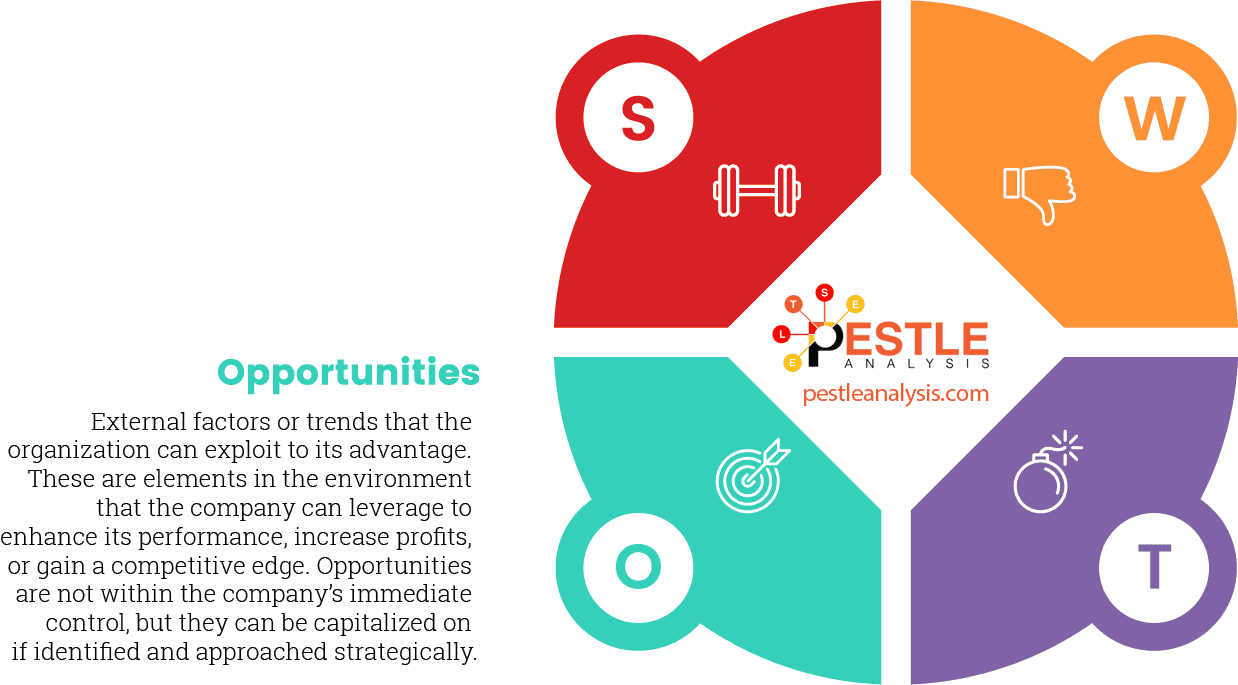
Opportunities are an external factor. The business has no control over this matter. They tend to happen because of external reasons. Political, economic, social, or even technological reasons may give rise to opportunities. Opportunities are good for the business. When an opportunity arises you need to grasp it to make full use of it. This will ensure that the company performs better. A SWOT analysis is done so that the business can identify such opportunities.
Let’s say a change in trend favors the business. Then we will consider it as an opportunity. We will write it down under the Opportunities section in the SWOT model. Other things may include a change in currency rate which favors the company. Government relaxing rules and regulations can also be seen as an opportunity to do better business.
Opportunities are where the company plans to go in the future. You want to know about this so that you have a better idea if the company is going to be around for a long period of time or if they're looking to expand.
When you hear about a company growing and expanding, these are good indications of growth and that can mean a lot of good news for the company if you're planning on investing with them.
Threats
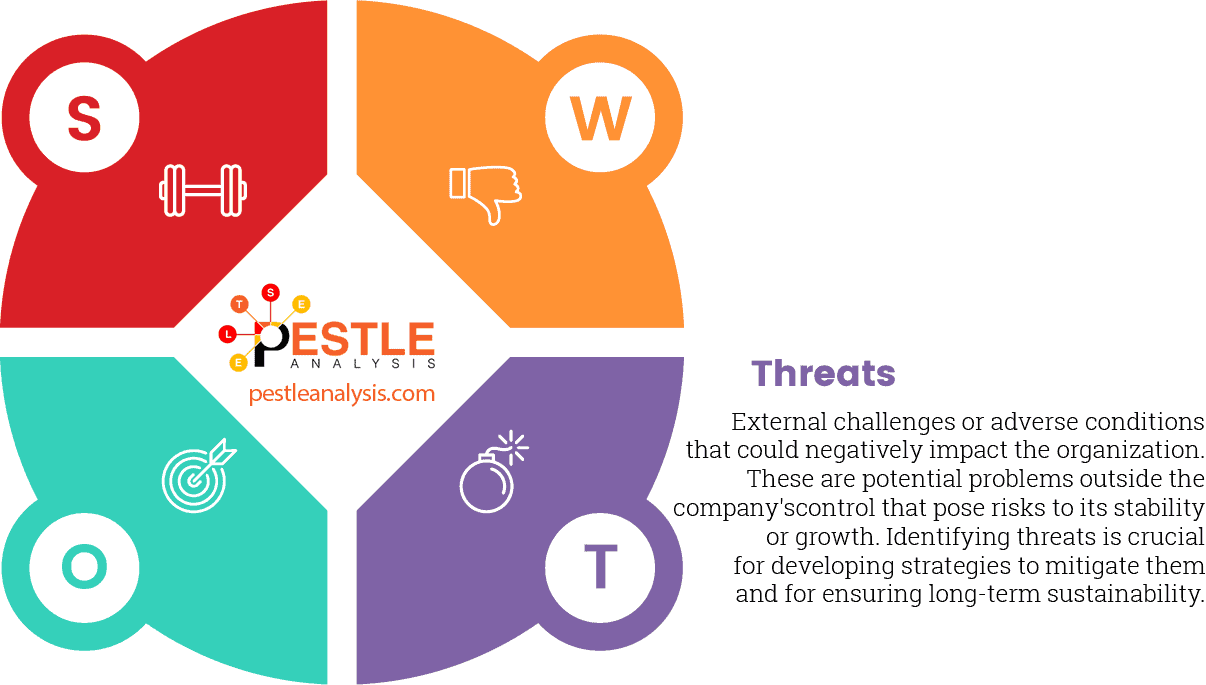
Next you want to look at threats. Threats can be anything from a competitor and the various types of competitors that they have, to areas where you can foresee problems that are coming in.
Threats to a business are situations where the business will stumble. They will create a problem for the smooth running of the business. So that they don’t affect the company much, the company needs to identify them as soon as they can. They identify such situations during a SWOT analysis and list them down in the SWOT model under the Threats column.
By identifying the threats beforehand, the company can make a contingency plan so as to avoid them. Threats can arise from various situations. These are also external factors meaning there is no control over them. Threats can include things like; political instability, competitors finding newer ways of production. Lawsuits and bad media coverage can also be termed as threats. New competitors entering the market or existing competitors taking a major share of the market are also threats.
A lot of people knew before Blockbuster went bankrupt that they were going to go bankrupt. They knew this because the company model was outdated. Blockbuster was trying to keep people renting videos in their stores, when people had already started to switch over to Netflix online.
How to do a SWOT model
You can fill in the different boxes with little bullet points or dashes. You are going to put a few items in every area to indicate where a company is strong vs. where they're weak. Companies all over the world use this formula to understand their weaknesses and reveal their competitive advantage.
Until recently, a lot of people thought Walmart might have a potential problem because they had bad news about their stores, they weren't paying their staff, and they weren't even stocking their shelves with merchandise. When you look at a company, all of these are indications as to whether or not a company is going to do well or if they're going to fail.
When you look at a model like this, it can help you to see how you can also do a paper on comparing different companies like Blockbuster and Netflix. While you start out looking at comparison companies, down the road, you might be working to help merge companies. There are companies that may look like they could be potential mergers because of the types of businesses that they work in.
For example, Target and Walmart might be good companies that could merge together because they sell some more products. The only way you'd be able to tell is by starting your SWOT model to look at what each has to offer. This is also looked at as a SWOT analysis when they think about potential deals with other companies that they may want to work with.
A company may want to know detailed items on another company to help ensure that they understand where their problems are, and where their strong suits are and what they're going to do in the future.
Whenever you look at a company, always do a SWOT model, even if you do a small one. A typical SWOT model could be a full page, but you might just do one that's only maybe a few items per block. The whole idea is that you still get information on your paper to help you better understand what the company is doing.


